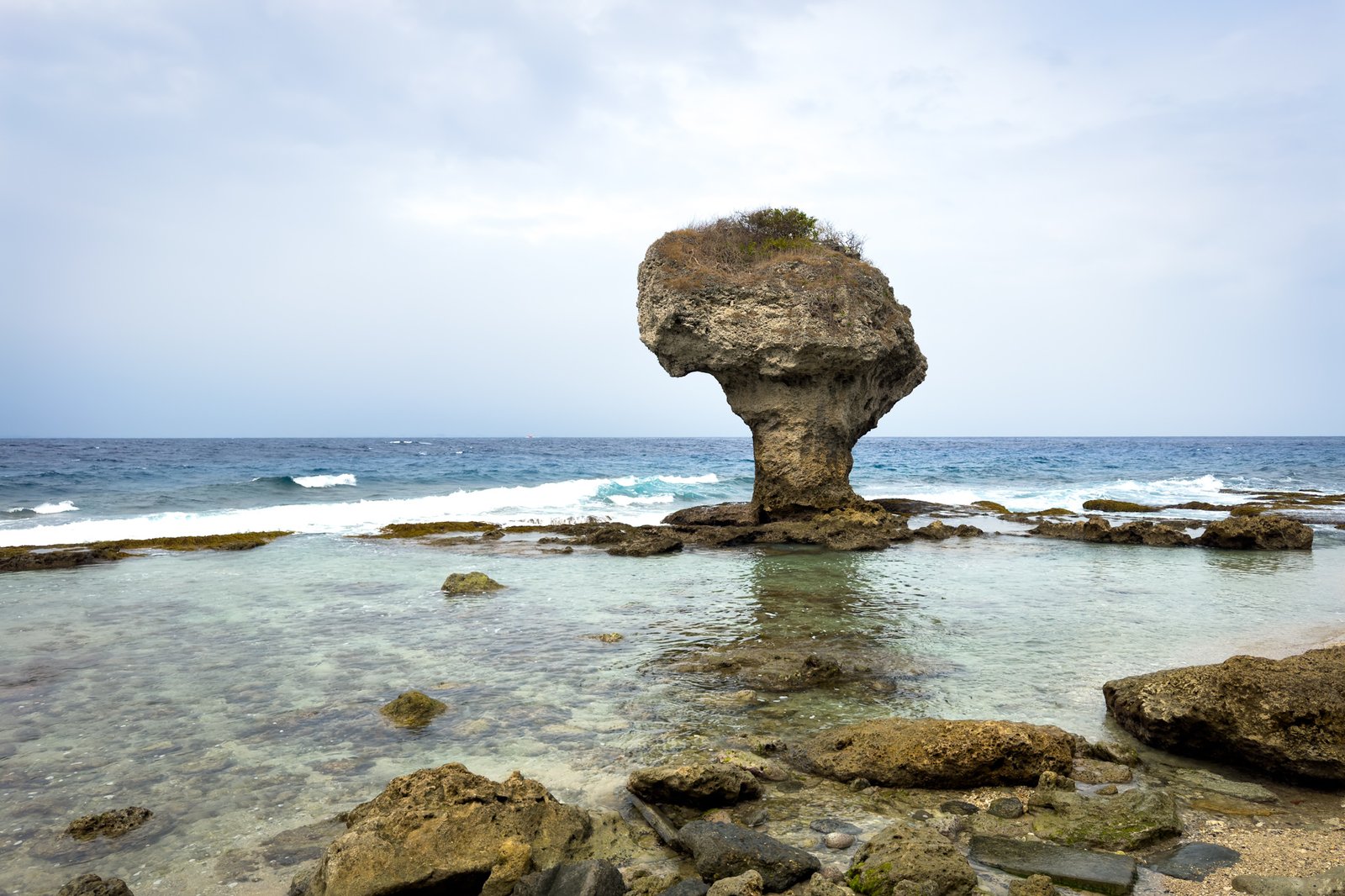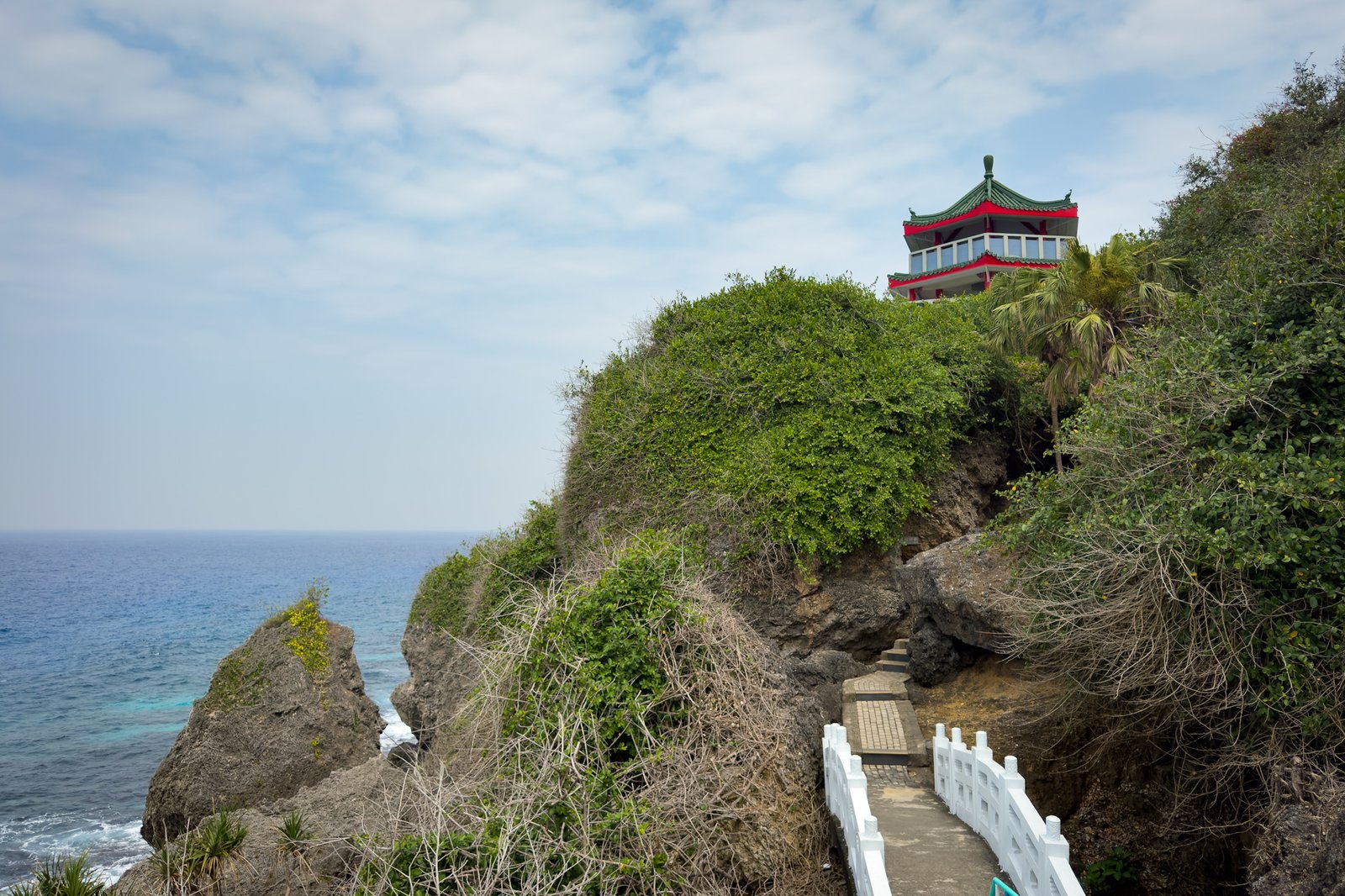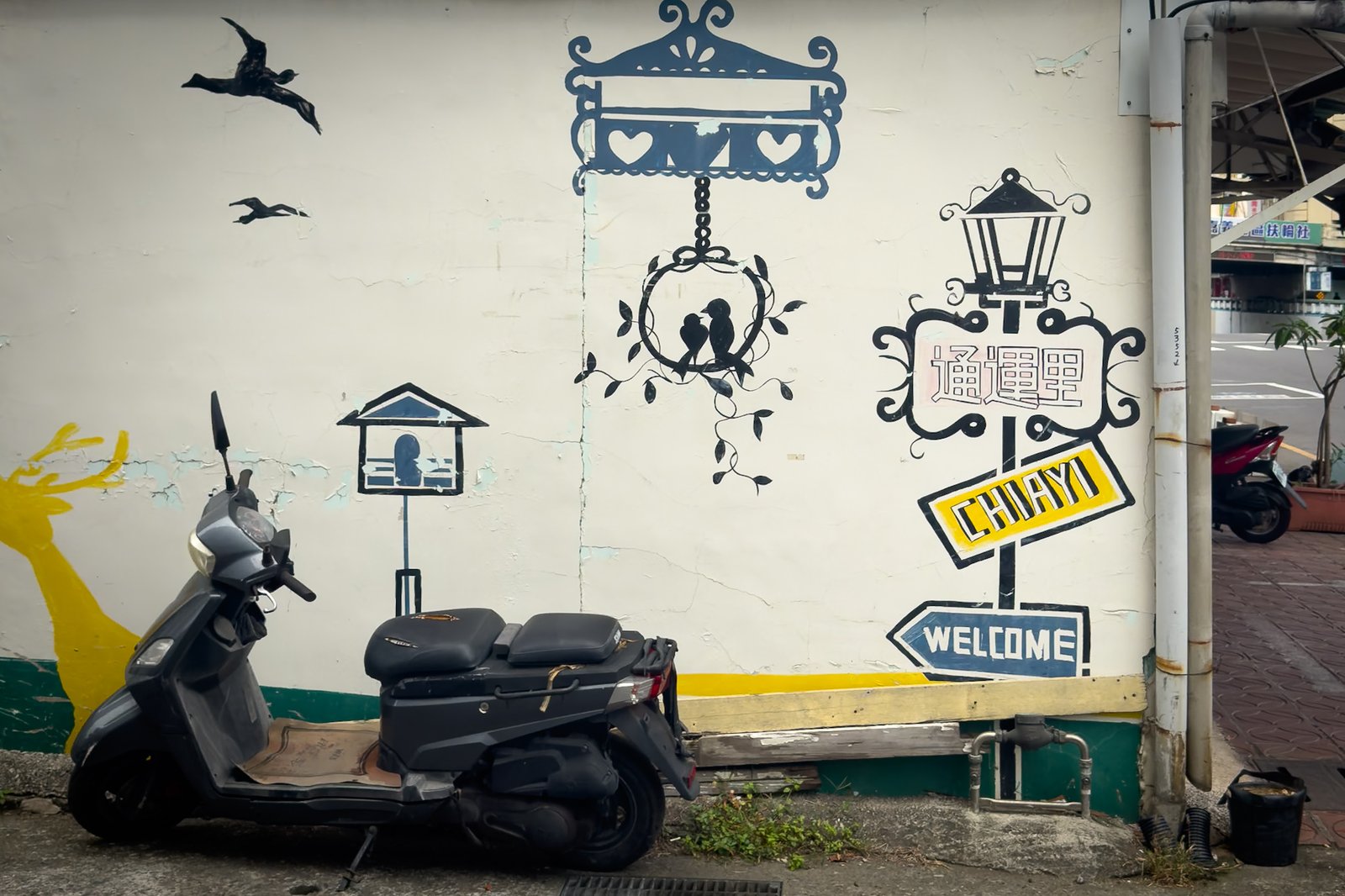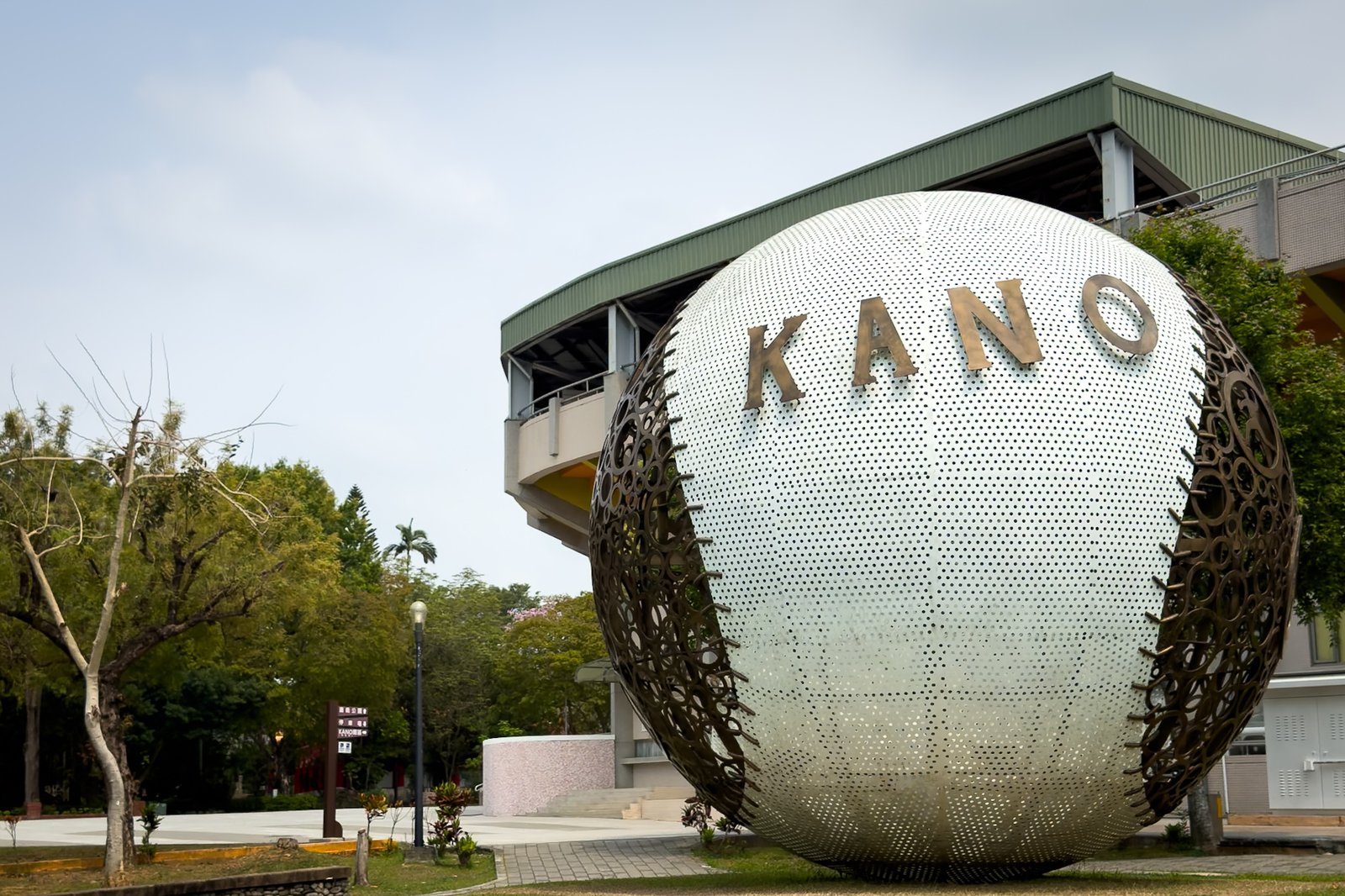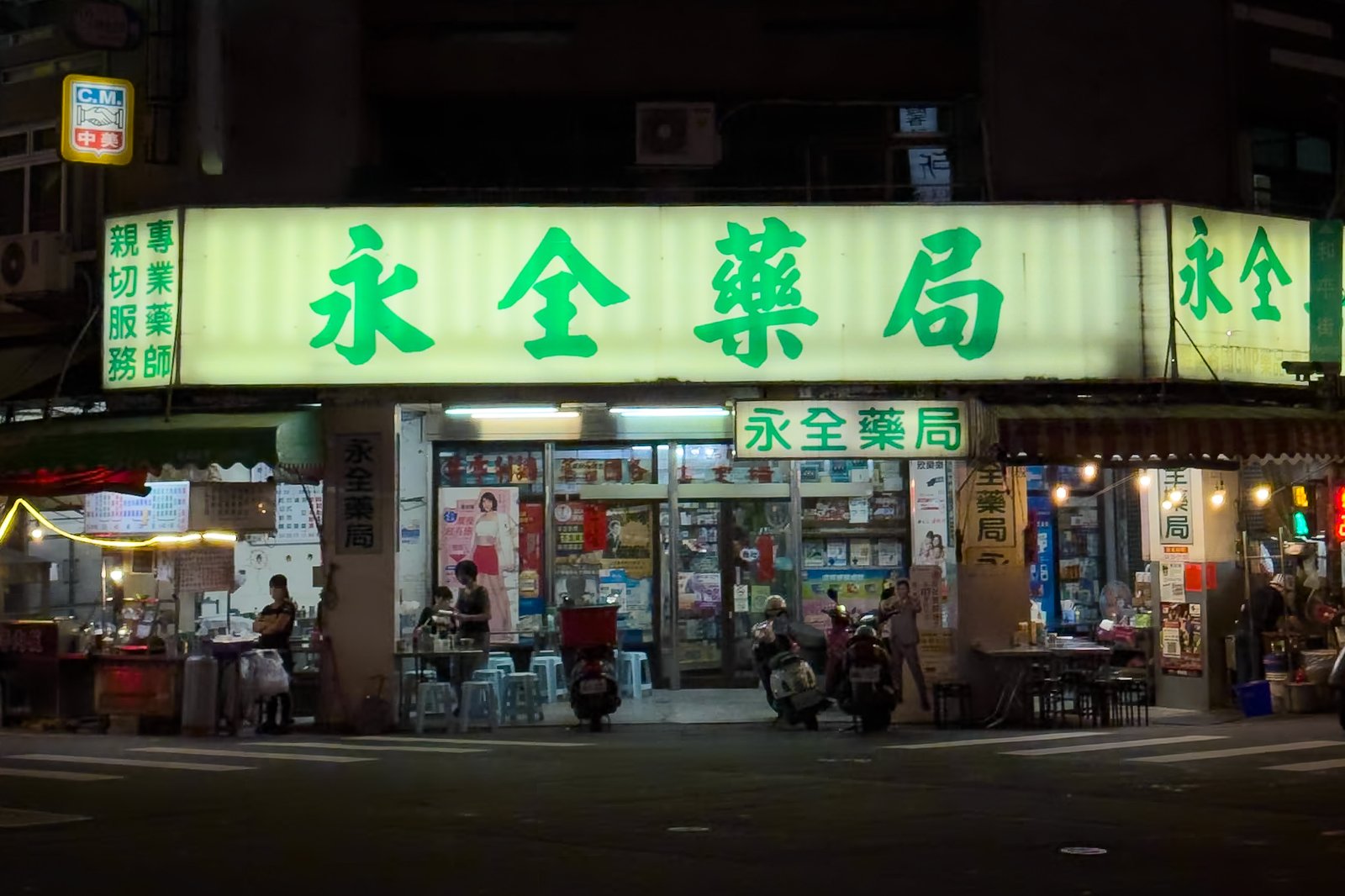Looking for what to do in Taipei? We were in the same boat when we started planning our itinerary through the city — and we can tell you right away: you’re going to love it. Taipei was the last stop on our 3-week trip around Taiwan and turned out to be the cherry on top. A vibrant city full of contrasts, where tradition and modernity walk hand in hand.
In this guide, we’ll share our 5-day itinerary in Taipei: what to see, do, eat, how to get around, and even how to visit Jiufen, a magical mountain village that made us feel like we were inside a movie. All based on our personal experience — because there’s nothing like an itinerary created by someone who’s actually been there, right?
Table of Contents
Best time to visit Taipei
We visited Taipei in April and honestly, it was the perfect choice. The weather was mild, the days were sunny, and there were no summer crowds. If you can, avoid July and August — they’re not only hotter but also typhoon season. March, April, October, and November are ideal for exploring the city at a relaxed pace and with good weather.
Where to stay in Taipei
Choosing where to stay in Taipei might seem tricky with so many interesting neighborhoods, but we’ve got you covered. From the youthful vibe of Ximending, to the cozy cafés and parks in Da’an, or the multicultural energy of Zhongzheng — there’s something for every style.
We wrote a full post about it — with the best areas and recommended accommodations — including where we stayed and what we thought of each neighborhood. You can read it here: Where to stay in Taipei.
5-day Taipei itinerary: day by day
Day one – Arrival and first explorations
We arrived in Taipei excited to explore something new. On that first day, we stayed around the hotel area, wandered through the Hua Yin Jie Shopping District where we found a café we loved — Yokoso Coffee — and in the late afternoon we went to explore Ximending, one of the liveliest areas of the city.



We wandered through the bright and bustling streets, explored the night market, and checked out the open-air bar area near the Ximen Red House. We also stopped by the 16 Creative Boutique, a local artist market, and walked across the famous Rainbow Six crosswalk — one of Ximending’s most iconic spots.

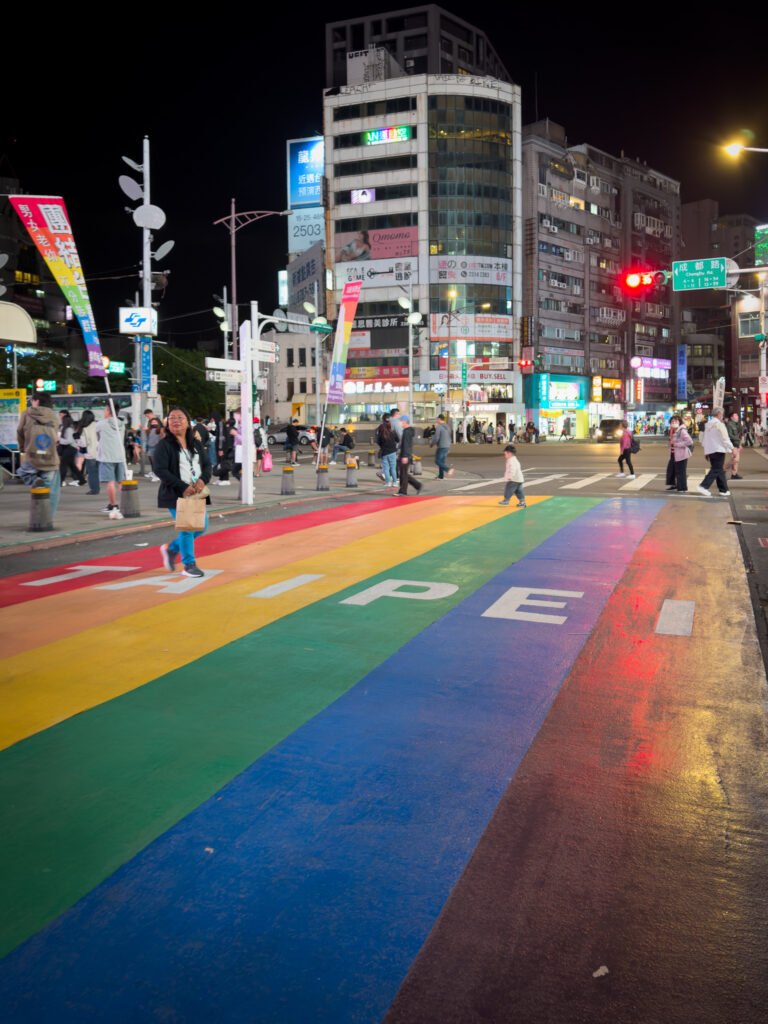

We had dinner at Monga Fried Chicken, famous for its Taiwanese fried chicken, and ended the night at HANKO 60 如醉如夢, a bar with movie-inspired cocktails and a cozy, modern atmosphere. They also serve snacks and light meals, perfect if you’re feeling like a small bite.
Day Two – Taipei 101 View and Night Market
We started the day with coffee at Yokoso Coffee (again), which opens early and was right next to our hotel – perfect for early explorers. Fueled up, we took the metro to the famous Taipei 101, one of the world’s tallest buildings and a city icon.



We bought timed-entry tickets online to avoid queues (we recommend doing the same, especially in peak season – Taipei 101 tickets are slightly cheaper here than the official site, with a dedicated exchange line). There are two ticket types: one grants access to the 89th floor and outdoor 91st floor; the more complete option includes the Secret Garden at the very top.
After waiting to ascend, we found the Secret Garden underwhelming – a small, overly air-conditioned interior space with tables but no significant extra views. The basic ticket might suffice if you want to save money.

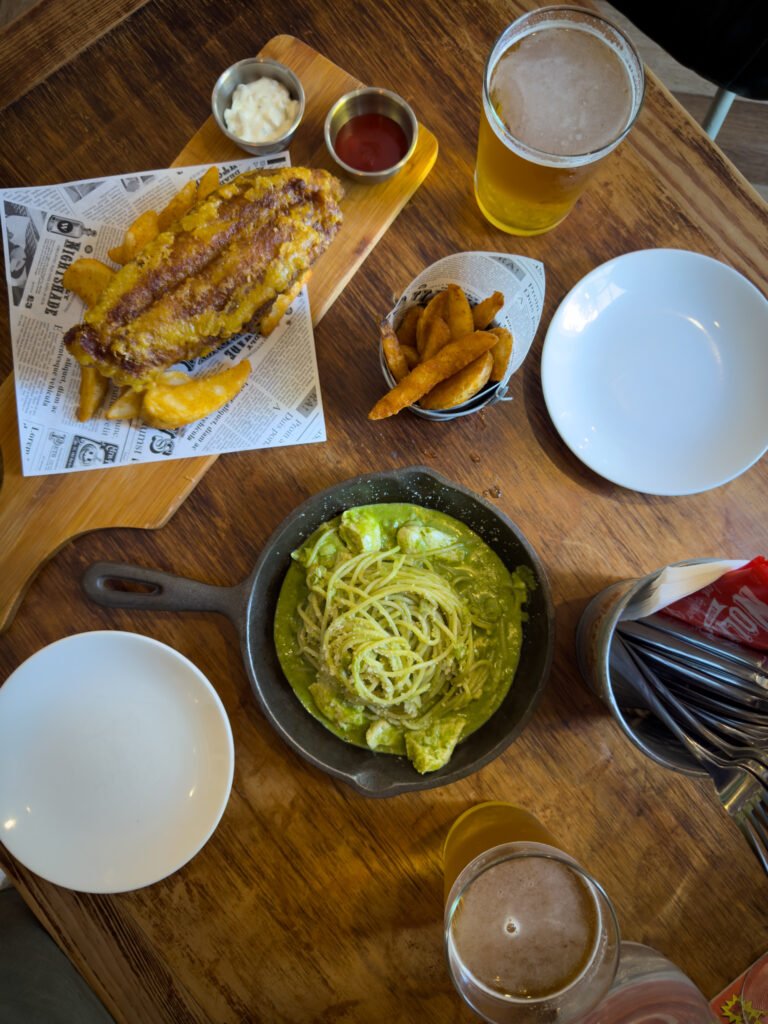

After Taipei 101, we lunched at Nola Kitchen (New Orleans-inspired with vegan options) en route to Xiangshan Trail. We paused at % Arabica for their minimalist-designed quality coffee – worth stopping if you’re a coffee lover.



The Xiangshan Trail (aka Elephant Mountain) offers Taipei’s best skyline views, especially of Taipei 101. The climb involves many stairs – challenging in heat, but absolutely worth it. We did the full loop passing multiple viewpoints.
Many visit at sunrise/sunset for magical lighting, but our midday hike (despite heat) was equally rewarding.



At night, we visited Ningxia Night Market, one of Taipei’s most traditional street markets. Smaller than others but packed with charm, we sampled dumplings, sausage egg rolls, and other local bites while soaking up the vibrant atmosphere – an affordable, authentic Taiwanese dining experience.
Day Three – Creativity, Street Food and Night Markets
We began with Portuguese egg tarts at Grand Pappa Portuguese Egg Tarts (老爺爺葡式蛋塔-後站店). Called “Portuguese” but less sweet than Lisbon’s version, though you can add cinnamon.
After coffee at Rear Station Café (where the fresh bread looked amazing), we headed to the massive Taipei Dome baseball stadium – but our real target was the Songshan Cultural and Creative Park behind it. This transformed factory complex houses the Taipei Design Museum, local artist shops, workshops, and a Baroque-style garden – a creative hub worth hours of exploration.



We headed to the Taipei Dome, a massive stadium dedicated to baseball. What we really wanted was to see the structure from the outside – it’s truly impressive. But what brought us there was what’s behind it: the Songshan Cultural and Creative Park. Former factories transformed into a creative space full of soul: there’s the Taipei Design Museum, several local artist shops, workshops, and even a baroque-style garden in the center that adds an unexpected charm to the atmosphere. It’s the kind of place where you can spend hours discovering new things, with many gardens around and people relaxing there.



For lunch, we hit foodie paradise Alley 22, Lane 553, specifically BURGER OUT for their fried chicken burgers (delicious and fast). Post-lunch coffee at Tropo Coffee capped off a street packed with brunch spots and boutique cafés.



We returned to Taipei Dome to visit Eslite Spectrum Songyan – not just a bookstore but a massive concept store blending literature, fashion, decor and cafés. After spending hours there, we rested at our hotel before our night market mission.

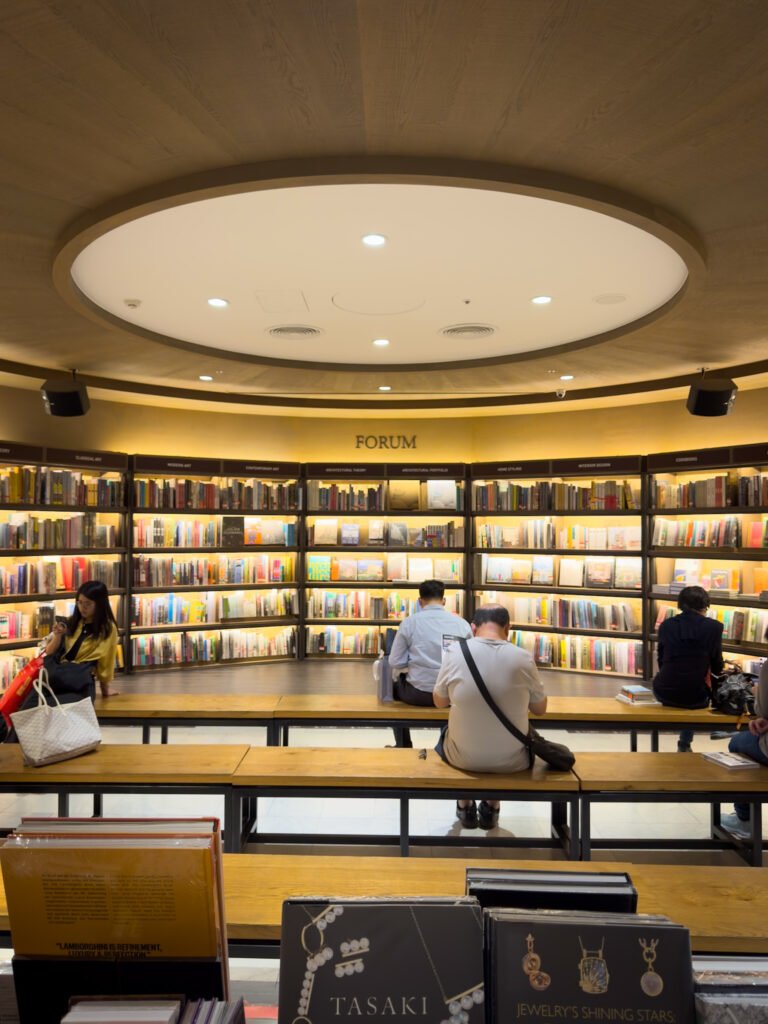

We skipped the touristy Shilin Night Market for Raohe Street Night Market – the best decision. The illuminated Songshan Ciyou Temple greeted us at the entrance, alongside the famous pepper bun stall (worth the quick line) – crispy outside, spicy meat inside.


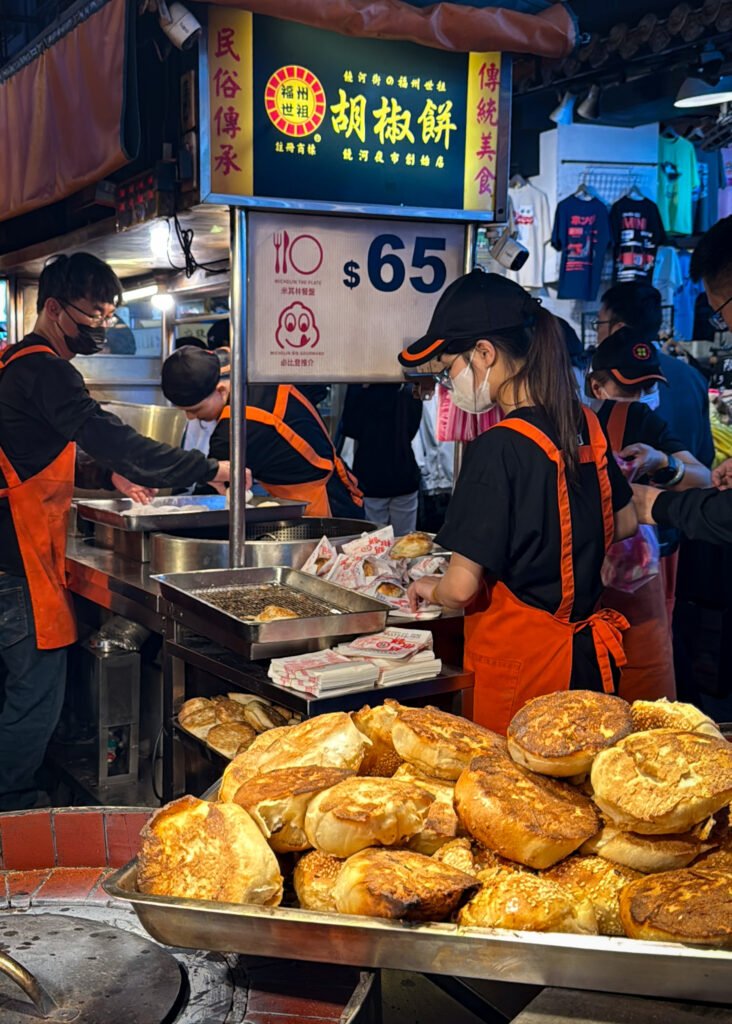
We sampled dorayakis, dumplings and more along this vibrant market strip – a true Taipei night market experience.
Day Four – Jiufen: The Enchanted Mountain Village
If you’re planning a Taiwan trip, Jiufen belongs on your list. This village looks straight out of a movie – many associate it with Miyazaki’s Spirited Away (though the director denies direct inspiration, you’ll immediately see the resemblance).



How to get to Jiufen
The easiest and fastest way? Uber — that’s what we did. In about 30 minutes from Taipei (and around €30), you’ll get there hassle-free. It’s comfortable, direct, and the ride itself is beautiful, full of lush green scenery.
But if you want to save money or have a more local experience, it’s also super easy to take a train to Ruifang Station and then hop on a bus to Jiufen. It’ll take longer, but it’s a little adventure in itself.
What to do in Jiufen
Once you arrive, it’s best not to stick to a strict plan. Jiufen is one of those villages where the magic lies in getting lost. Narrow alleys with hanging red lanterns, the smell of street food, teahouses with stunning sea views… it all creates a magical atmosphere.



We had lunch at Yu Zai Fan Shu Tea House, with an amazing sea view — the perfect spot for a midday break. In the afternoon, we had tea at the famous A-Mei Teahouse, probably the most iconic place in the village (the tea set costs 350 TWD per person, but it’s worth every cent for the experience and the view). For dinner, we found Jiufen Jie Jiao Traditional Diner, where we had delicious xiaolongbao and even tried some local craft beers. Highly recommended!



Is it worth staying overnight in Jiufen?
Well, it depends on your travel pace. We decided to stay one night and loved it — it was the best way to enjoy the village without the crowds. By late afternoon, the tour groups leave and Jiufen transforms. The lanterns light up, the village quiets down, and the sea view at dusk is simply otherworldly. You can check where to stay in Jiufen in our guide about where to stay in Taipei.



If you don’t want to stay overnight, it’s ideal to arrive mid-afternoon. That way, you can explore the streets calmly, watch the sunset with a nice cup of tea, and then wander the lantern-lit alleys. Just keep in mind: by around 9 p.m., most shops and cafés are already closed.
Day five – Back to Taipei and final discoveries
We returned from Jiufen to Taipei the same way we came: by Uber. It’s definitely the most convenient option, especially with luggage and after a full day. Back in Taipei, we made the most of this last day in the city — and even came across a few spots that are definitely worth sharing with you.



Our first stop was the 228 Peace Memorial Park, a green space right in the city center with a powerful history. This park honors the victims of the 228 Incident, one of the darkest chapters in Taiwan’s recent past. Even if you don’t know all the details, it’s worth stopping by to pause and reflect.



Then we headed to one of Taipei’s landmarks: the Chiang Kai-shek Memorial Hall. Even if you’ve seen pictures, being there in person and taking in the grandeur of the architecture is something else. The changing of the guard is a classic — if you have time, try to catch it.
For lunch, we played it safe and went to one of the most recommended spots: Din Tai Fung Xinsheng Branch. It’s near the original location (Din Tai Fung Xinyi Branch, which now only does takeaway) and it’s a great option if you want to try the famous xiao long bao — the soup-filled dumplings. And yes, they really are as good as everyone says!
In the afternoon, we were looking for a coffee and tried our luck at the Simple Kaffa Huashan Flagship Store, but the line was huge. We ended up going to COZY SUN DAY CAFE 日向咖啡 華山店, just next door — chill vibes and perfect to take a break.



Then we went to explore the Huashan 1914 Creative Park, another one of those old industrial spaces that Taiwan has reinvented so well. This former sake factory has been turned into a creative hub with design shops, art studios, and trendy cafés.



Before heading back to the hotel, we still had room for something sweet: we tried a caramel mochi waffle at 貨室甜品|Huoshih (there’s a shop inside the Huashan 1914 Creative Park). A sweet way to wrap up the afternoon!



Since we were staying near Ximending, we ended up going back again — it’s hard to resist the energy of that area at night. We headed to the Ximen Red House Outdoor Bar Area, perfect for a relaxed drink to end the day, with that chill, inclusive vibe we loved. For dinner, we chose Sol Bistro, just around the corner. They have outdoor seating, which was perfect, and serve some Spanish-inspired tapas that turned out to be a pleasant surprise. Nothing fancy, but a great way to wrap up our last day in Taipei.
Tips to explore Taipei like a local
- Public transport: Taipei’s MRT is efficient, clean, and super easy to use. Get an EasyCard as soon as you arrive or online — it works on the MRT, buses, and even some trains. You can top it up at any station or convenience store.
- Payments: Most places accept cards, but it’s still a good idea to carry some cash. To withdraw without extra fees, look for ATMs from the Bank of Taiwan or Mega Bank.
- Online bookings: We recommend buying tickets for attractions like Taipei 101 in advance. We used Klook — it was cheaper and helped us skip the lines.
- Safety: Taipei is one of the safest cities we’ve ever visited. Even at night, we always felt at ease. That said, common sense is always important.
- Drinking water: Tap water is treated, but many locals still prefer bottled. We used a filtered bottle and had no issues at all.
Taipei is full of surprises. It’s chaotic and peaceful, modern and spiritual, intense and welcoming. In five days, we saw a lot — but we left wanting even more. If you’re planning a trip to Taiwan, make sure to spend at least five days in Taipei. You’ll see it’s worth every minute.
This itinerary is based on our own experience, and we hope it helps you make the most of your visit and discover what to do in Taipei. If you’ve got any questions or want more tips, we’re here for you!
When is the best time to visit Taipei?
The best time to visit Taipei is between March and April or between October and November. During these months, the stable weather and pleasant temperatures make exploring much more enjoyable.
Is Jiufen worth a day trip?
Yes, Jiufen is a perfect day trip from Taipei. With narrow lantern-lit streets, tea houses, and sea views, it’s a magical spot ideal for a one-day visit.
Is it easy to use public transport in Taipei?
Very easy! Taipei’s MRT is efficient, clean, and covers nearly the entire city. Just load up your EasyCard and you’re good to go.
Do I need cash in Taipei?
Even though many places accept cards, some markets and shops only take cash. It’s best to withdraw from Bank of Taiwan or Mega Bank ATMs to avoid extra fees.
How many days should I spend in Taipei?
Five days are perfect to explore the main attractions, markets, and even do a day trip to Jiufen. It’s enough time to see a lot without rushing.


